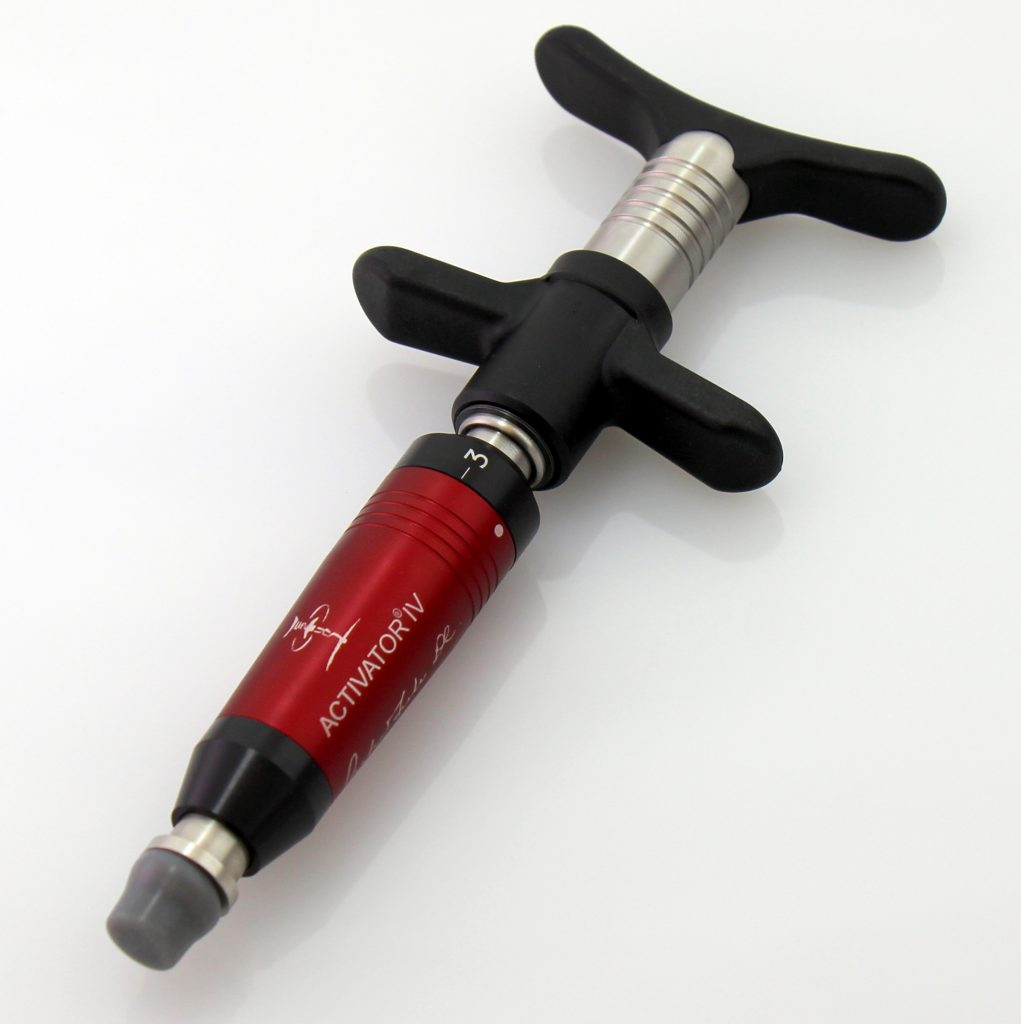The term “activator” can refer to various concepts, from the chemical activator in a biological process to a specific chiropractic adjusting instrument. In this article, we will focus on the chiropractic activator, a handheld instrument used to deliver gentle, controlled adjustments to the spine.
What is a Chiropractic Activator?
A chiropractic activator is a handheld instrument designed to deliver low-force adjustments to the spine. Unlike traditional manual adjustments, which involve the chiropractor using their hands to manipulate the spine, the activator utilizes a spring-loaded mechanism to deliver a controlled thrust. This technique is often referred to as “instrument-assisted adjusting” or “IAA.”
How Does the Activator Work?
The activator typically consists of a handle, a spring-loaded plunger, and a contact point. When the chiropractor applies pressure to the plunger, the spring is compressed, storing energy. Upon release, the stored energy is delivered to the targeted spinal segment, causing a gentle adjustment. The contact point is designed to fit comfortably against the patient’s spine, ensuring minimal discomfort.
Benefits of Activator Adjustments
Activator adjustments are often preferred by patients who are sensitive to traditional manual adjustments. Some of the benefits associated with activator therapy include:
Reduced pain: Activator adjustments can help alleviate pain associated with spinal misalignments, such as back pain, neck pain, and headaches.
Improved mobility: By correcting spinal misalignments, activator therapy can improve range of motion and overall mobility.
Enhanced function: Activator adjustments can help restore proper function to the nervous system, leading to improved overall health and well-being.
Gentle and precise: Activator adjustments are known for their gentleness and precision, making them suitable for patients of all ages and fitness levels.
Activator Therapy in Practice
Activator therapy is often used in conjunction with other chiropractic techniques, such as manual adjustments and soft tissue therapy. The chiropractor will carefully assess the patient’s condition to determine the most appropriate treatment plan.
During an activator adjustment, the chiropractor will identify the specific spinal segment that needs to be adjusted. They will then position the activator contact point over the affected area and apply gentle pressure to the plunger. The resulting thrust will be delivered to the spinal segment, helping to restore proper alignment.
Activator Adjustments vs. Traditional Manual Adjustments
While both activator adjustments and traditional manual adjustments can be effective in treating spinal conditions, they have distinct advantages and disadvantages.
Activator Adjustments
Gentler: Activator adjustments are generally considered to be more gentle than traditional manual adjustments.
More precise: The activator’s spring-loaded mechanism allows for more precise control over the force of the adjustment.
Suitable for sensitive patients: Activator therapy is often preferred by patients who are sensitive to traditional manual adjustments.
Traditional Manual Adjustments
More forceful: Traditional manual adjustments involve the chiropractor using their hands to apply a more forceful thrust to the spine.
Can be more effective for certain conditions: Some conditions may respond better to traditional manual adjustments, especially those that require a more forceful intervention.
Ultimately, the best type of adjustment for a particular patient will depend on their individual needs and preferences.
Common Conditions Treated with Activator Therapy
Activator therapy can be used to treat a wide range of spinal conditions, including:
Back pain
Neck pain
Headaches
Sciatica
Whiplash
Sports injuries
Posture problems
Is Activator Therapy Right for You?
If you are experiencing spinal pain or discomfort, it is recommended that you consult with a qualified chiropractor to determine if activator therapy is appropriate for you. Your chiropractor will conduct a thorough examination to assess your condition and recommend the most suitable treatment plan.
Remember: Activator therapy is a complementary health care approach, and it should not be used as a substitute for conventional medical treatment. If you have a serious medical condition, it is important to consult with your primary care physician.

FAQs
Q: What is an activator?
A: An activator is a term used in various contexts to describe a substance or process that initiates or speeds up a reaction or process. It can refer to chemical activators used in manufacturing, biological activators in the environment, or even digital activators in software.
Chemical Activators
Q: What are chemical activators used for?
A: Chemical activators have a wide range of applications, including:
Industrial processes: Catalyzing chemical reactions in manufacturing, such as polymerization and curing.
Medical treatments: Enhancing the effectiveness of medications or diagnostic procedures.
Food production: Improving the texture, flavor, or shelf life of food products.
Q: What are some common examples of chemical activators?
A: Some common examples of chemical activators include:
Catalysts: Substances that speed up chemical reactions without being consumed in the process.
Initiators: Compounds that start a chain reaction, often used in polymerization processes.
Crosslinkers: Agents that form bonds between polymer chains, improving their strength and durability.
Biological Activators
Q: What are biological activators?
A: Biological activators are substances or processes that stimulate or enhance biological activity. They can be found in nature or produced synthetically.
Q: What are some examples of biological activators?
A: Examples of biological activators include:
Enzymes: Proteins that catalyze biochemical reactions in living organisms.
Hormones: Chemical messengers that regulate various bodily functions.
Growth factors: Proteins that stimulate cell growth and differentiation.
Digital Activators
Q: What are digital activators used for?
A: Digital activators are codes or processes that unlock or enable features in digital products, such as software, games, or hardware.
Q: How do digital activators work?
A: Digital activators often involve verifying a product key or license code against a server to ensure that it is legitimate. Once verified, the product is activated and can be used.
Additional Information
Q: Are activators always beneficial?
A: While activators can be beneficial in many ways, they can also have negative consequences. For example, excessive use of chemical activators can lead to environmental pollution, and unauthorized activation of digital products can be illegal.
Q: Where can I learn more about activators?
A: There are numerous resources available online and in libraries that provide information on activators, depending on the specific context. For example, you can search for information on chemical activators in chemistry textbooks or online databases, while digital activators might be discussed in computer science or software engineering resources.
It’s important to note that the term “activator” can have different meanings depending on the field or context. To get more specific information, it’s recommended to search for the term along with a relevant keyword, such as “chemical activator,” “biological activator,” or “digital activator.”
To read more; click here
